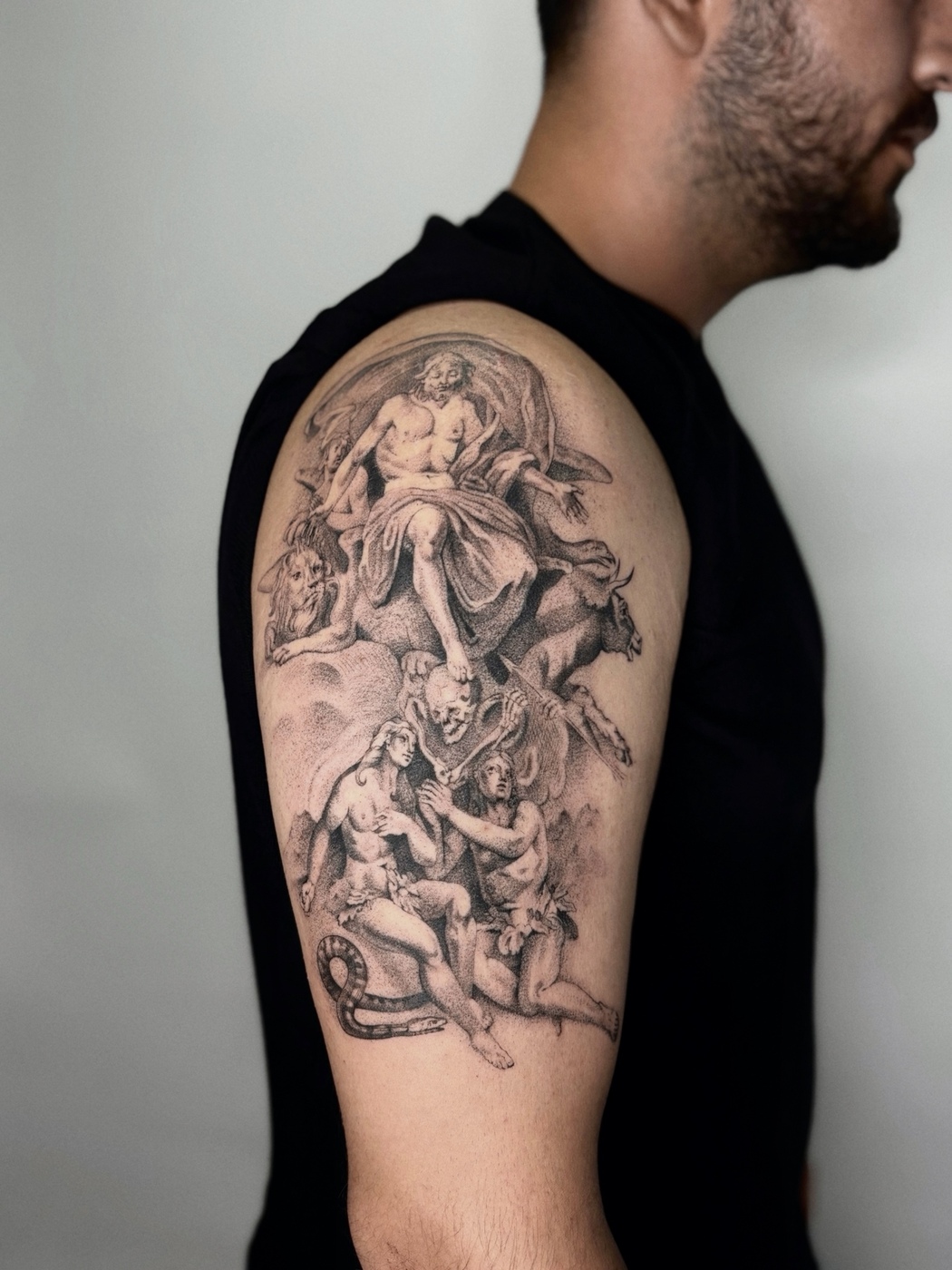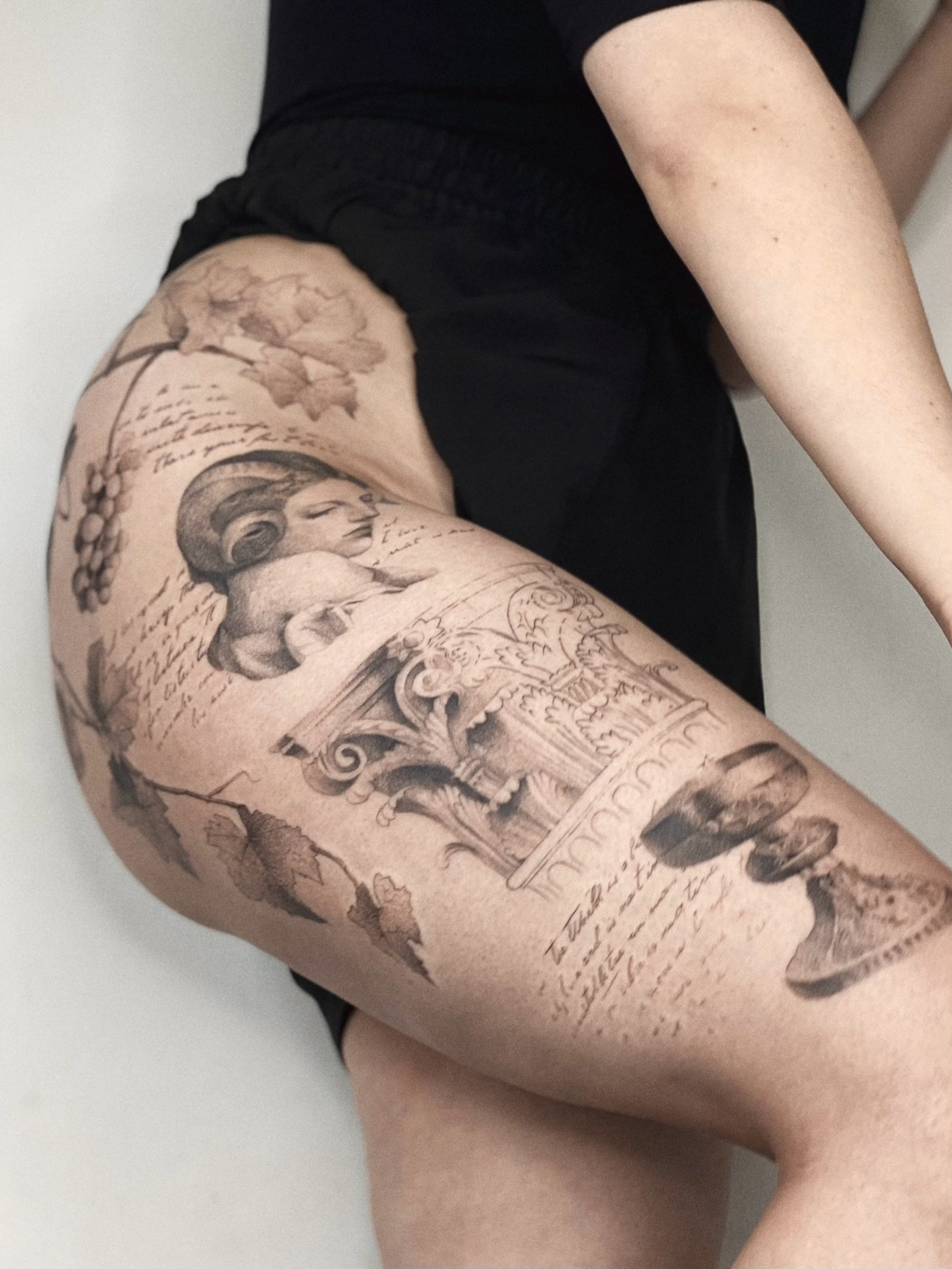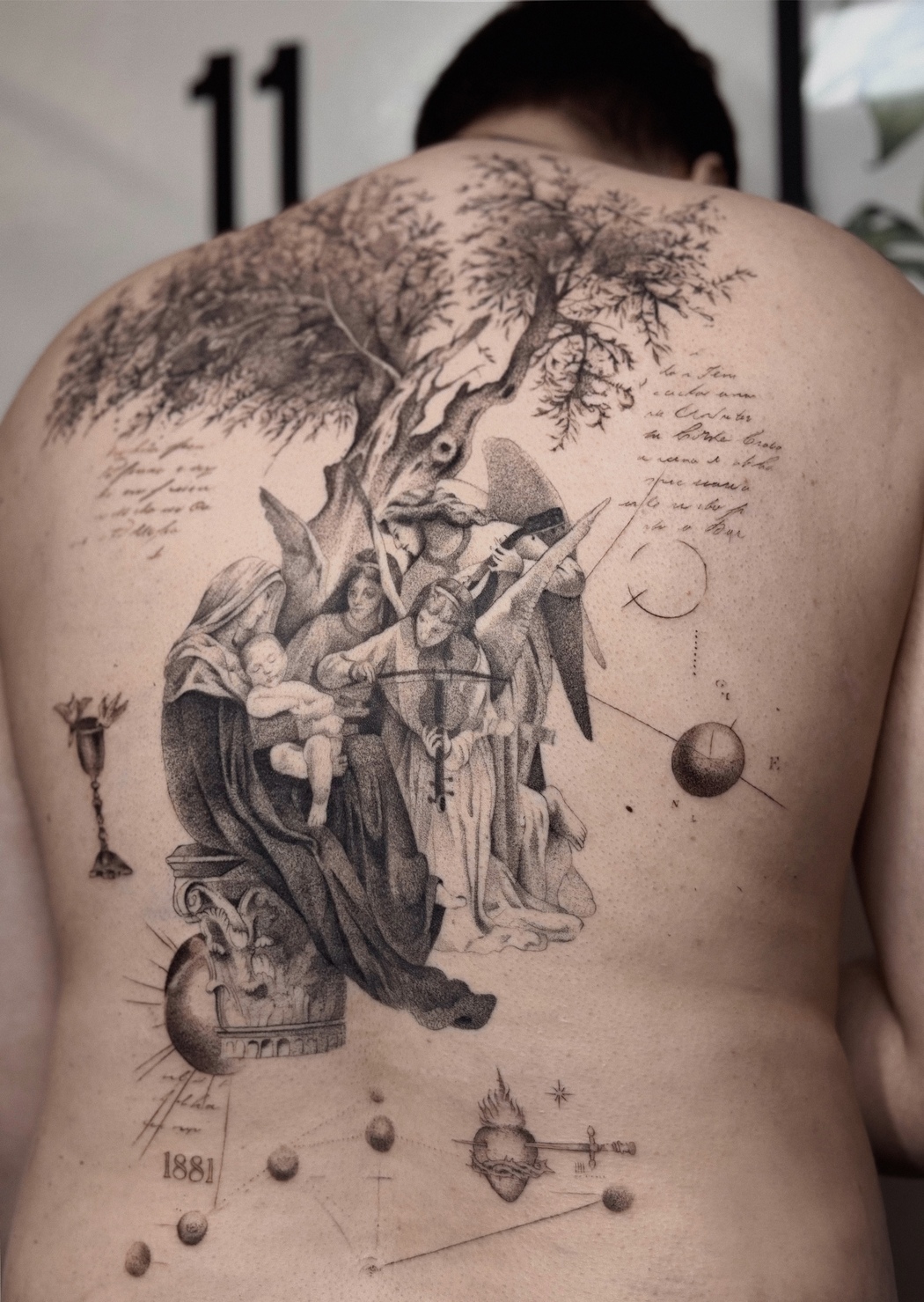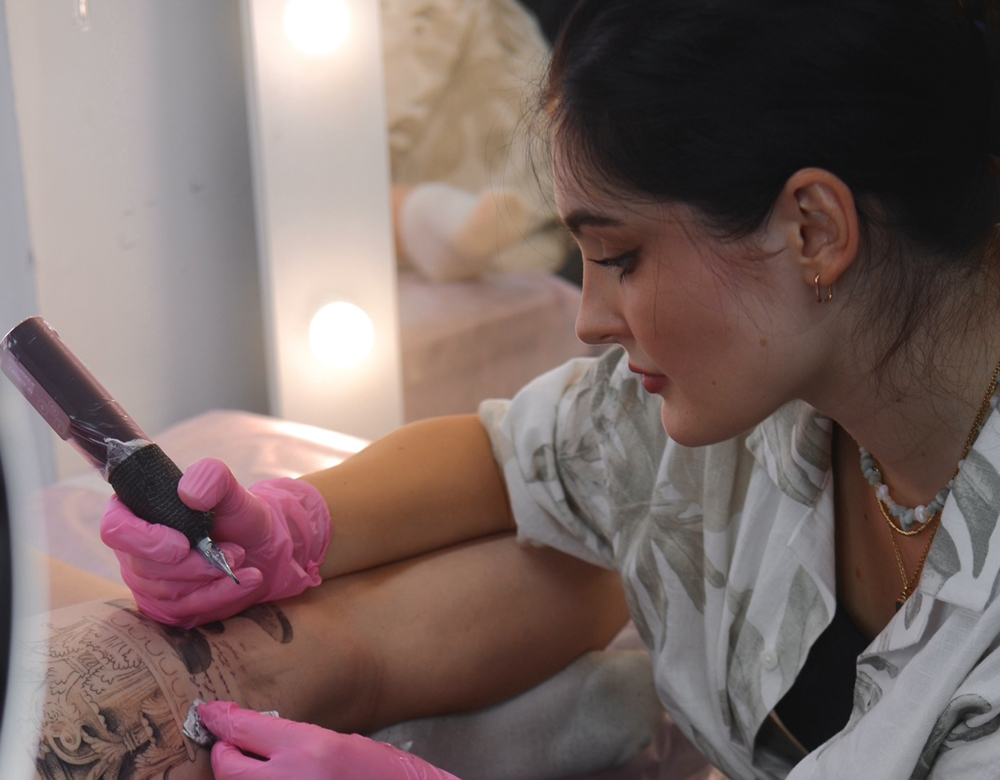Elizabeth Gromova
Year of birth: 2002.
Where do you live: Currently living between Moscow and Antalya.
Your education: Studied architecture but chose tattooing as a career.
Describe your art in three words: classical, refined, and narrative.
Instagram
Can you tell us about your first memories of drawing and how your passion for art developed over the years?
I remember painting with my nanny using watercolors when I was just three years old. Even then, I fell in love with the process. Since I wasn’t restricted by art school as a teenager, I had the freedom to experiment and draw inspiration from books and exhibitions. Even at school, I was constantly sketching—on notebooks, loose sheets, and later in dedicated sketchbooks that I carried to classes. Later, as I grew older, I began studying academic drawing, more professionally.
You took a tattoo course while still in university. What was it like transitioning from academic drawing to tattooing?
I took a tattoo course at a studio during my summer break, right before starting my studies in architecture. It was my dream and a present from my family. Meeting tattoo artists there was an incredible experience—they seemed so free and unique in their artistic expression, and that inspired me deeply.

Moving to Turkey must have been a major shift. How did this relocation impact your career and artistic growth?
Moving to a new country made me completely rethink my life and step out of my comfort zone. Before that, I was in a somewhat childlike mindset, without a strong drive to work hard toward my goals. But the move acted as a kind of shock therapy—it made me realize that I needed to push forward. That’s when I started defining my artistic style, becoming more active on social media, and learning the language.
Did you notice any cultural differences in tattoo preferences between your clients in Moscow and those in Antalya?
Comparing Moscow and Antalya is difficult because Antalya is more of a resort town, while Moscow is a major cultural and artistic hub. In Moscow, clients are very interested in the designs I can offer—they want something exclusive, reflecting the vision of a specific tattoo artist. In Antalya, people care less about the artist’s style and ideas; they are more focused on getting something personal to them.

You describe tattooing as a form of artistic expression. How do you balance personal creativity with client requests?
In the past few years, the clients who come to me already know my style and are open to my suggestions. However, I always listen carefully to their ideas and take their references seriously. I never insist on drastically changing their concepts; instead, I offer several variations they can consider.
In your opinion, what makes a tattoo not just a design but a true work of art?
A tattoo becomes a true work of art when it has depth and meaning. It’s not just an image on the skin, but a carefully thought-out composition where everything matters—style, composition, detail, and how it flows with the body. A great tattoo isn’t just a copy of a reference; it’s an artistic solution designed specifically for the person wearing it.

If you could tattoo any historical or mythical figure, who would it be and why?
I love working with paintings that depict historical figures and mythological beings. Living in Turkey, I’ve discovered its rich mythology, and for example I would love to tattoo Shahmaran—the half-woman, half-serpent from Eastern legends. I’m also fascinated by characters from Slavic and Greek mythology. In general, I’m drawn to human or humanoid figures because they always carry a story, an expression.


Leave a Reply